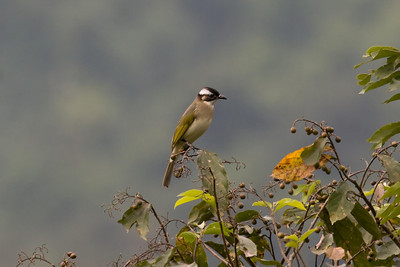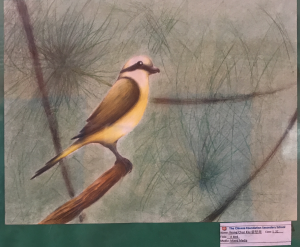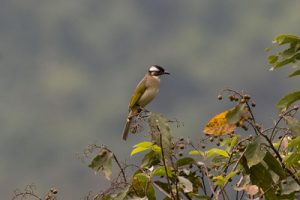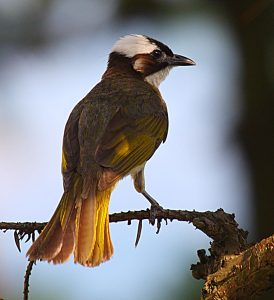| Common Name | (in English) Chinese Bulbul, Light-vented Bulbul |
| (in Chinese) 白頭鵯、白頭、白頭鵠仔 | |
| Scientific Name | (in Latin) Pycnonotus sinensis |
| Peculiar characteristics / external features: | It is a medium-sized (19 cm), noisy, conspicuous bulbul with a black crown, a white nape stripe bordered posteriorly by a black band, a thick black moustachial stripe and a buffy auricular patch. The back and wings are grayish with olive yellow highlights and edgings to the flight feathers; the throat and undersides are white, separated by a grayish-brown, diffuse breast band. The bill and legs are black. |
| Distributions: | The bulbul is common in East Asia, including Hong Kong, mainland China, Taiwan, Korea and Japan. The birds of Taiwan are of an endemic subspecies.
In Hong Kong, the light-vented bulbul is abundant in lightly wooded areas, cultivated land and shrubland, whereas the red-whiskered bulbul is the common bulbul of suburbs and urban parks. In Taiwan, however, the light-vented bulbul dominates all of these habitats, though it is replaced along the east coast by Styan’s bulbul. |
| Habits: | |
| l Dietary | Light-vented Bulbuls feed on berries, soft fruits and vegetables, as well as insects, which they sometimes capture in the air. |
| l Reproductive (Solitary/Social/Territorial, Courtship Behavior, Taking care of youngs, etc) | In Taiwan their breeding season is from March to July. The nest is cup-shaped, usually placed in the fork of a bush or hedge. It is constructed mainly of coarse grasses, and may be lined with rootlets, fine grasses, leaves and flowers, as well as man-made materials such as pieces of cotton and paper. Usually 3-4 eggs are laid. The Light-vented Bulbul is a common resident of Taiwan from lowlands to about 500 m, preferring borders of cultivated areas, orchards, gardens, scrub and open woodland. |
| l Whatever appropriate | |
| Interesting Fact: | Chinese Bulbuls have a distinctive white nape (white hair) and coarse voice, hence its traditional Chinese name: “white-haired old man”.
There is a type of Chinese painting which shows the symbol of good luck. It shows a pair of Chinese Bulbuls standing on a peony flower. Peony in Chinese means “rich” and Chinese Bulbuls mean couples reach old age together. |
References:
- http://e-info.org.tw/topic/bird/Pycnonotus-sinensis/Pycnonotus-sinensis.htm
- http://www.birdingintaiwan.com/light-ventedbulbul.htm
Voice of Chinese Bulbul:
https://www.youtube.com/watch?v=OHzajGmEWd0
Video:




